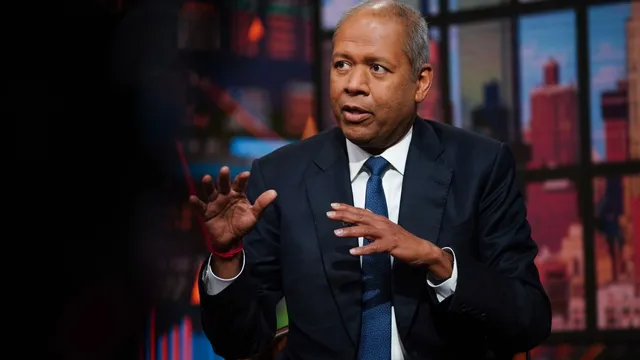
Barclays ditches diversity targets in the US workforce
2025-04-08 20:30- Barclays has decided to scrap diversity targets in the United States, adhering to a changing political environment.
- Many US corporations are reducing their diversity initiatives, influenced by governmental shifts in policy.
- Labour's new workers’ rights bill in the UK aims to prevent similar rollbacks and protect employees from discrimination.
Express your sentiment!
Insights
In a significant shift, Barclays, the British bank, has decided to eliminate its diversity targets within the United States. This decision comes amidst a broader trend influencing corporations to roll back diversity, equity, and inclusion (DEI) initiatives. Following the opposition to such diversity goals by former President Donald Trump, Barclays believes that its representation ambitions are no longer aligned with the current political climate in the US. However, these diversity policies will remain intact in other regions, including the UK, where the bank still plans to uphold its commitment to improving employee diversity. The abandonment of diversity targets by Barclays is not an isolated case. Many corporations in the US have reduced or completely cut back on DEI schemes. Recent statements and actions from large firms like Walmart and McDonald’s indicate a retreat from commitment towards fostering diverse work environments following governmental changes. This trend raises concerns about the potential long-term impact on workforce diversity and equality. In the UK, there is a contrasting approach as Labour's proposed workers' rights bill is set to counteract the US-style rollback of diversity initiatives. Labour intends to strengthen existing employee rights by mandating firms to proactively mitigate harassment and discrimination. Employment lawyers have warned that UK companies adopting similar strategies to those seen in the US may face legal repercussions for being found discriminatory. The tension between the shifting political landscapes in the US and UK highlights the disparity in approaches to workplace diversity. The UK's legislative actions may protect employees against what some have termed an adverse slide back into discriminatory practices seen elsewhere, as the UK government encourages more stringent policies against workplace discrimination. Ultimately, the outcome of Labour’s bill will likely influence corporate policies across the UK and may create a different narrative regarding workplace diversity compared to that of their counterparts in the US.
Contexts
The history of diversity initiatives in U.S. corporations has evolved over several decades, shaped by a combination of social movements, legal actions, and economic pressures. Throughout the 1960s and 1970s, a heightened awareness of civil rights led to the initiation of affirmative action policies aimed at creating a more equitable workforce. The Civil Rights Act of 1964 was a landmark legislation that prohibited employment discrimination based on race, color, religion, sex, or national origin, setting the foundation for future diversity initiatives. Corporations began to recognize the necessity of diversity, not only as a moral imperative but also as a strategy to improve their competitive advantage in a rapidly diversifying consumer market. By the late 1980s, businesses started implementing formal diversity programs, often in response to public pressure and demands for greater representation of women and minorities in leadership roles. As the corporate world responded to changing demographics and globalization, the 1990s saw advancements in diversity training and awareness programs. Companies began to employ diversity officers and create dedicated diversity councils, aiming to foster inclusive workplaces and enhance employee retention and satisfaction. The concept of diversity was broadened beyond race and gender to include sexual orientation, disability, age, and other dimensions of identity. This period marked a shift from merely compliance-driven initiatives to strategic approaches that recognized the value of diverse perspectives in innovation and problem-solving. In the early 2000s, the corporate landscape was influenced by numerous high-profile diversity initiatives and public commitments from major corporations. The Corporate Roundtable and the Business Leadership Network championed the importance of diversity not just for legal compliance but for business performance. Reports highlighting the connections between diversity in leadership and increased profitability reinforced the notion that diverse teams lead to better decision-making and creativity. This business case for diversity resulted in increased investment in comprehensive diversity programs, employee resource groups, and mentorship opportunities, aimed at promoting underrepresented colleagues within the organization. Entering the 2010s and beyond, diversity initiatives have continued to evolve in the context of global social movements that have brought issues of racial injustice, gender equality, and LGBTQ+ rights to the forefront. Movements like Black Lives Matter have urged corporations to take stronger stances and implement meaningful changes in their diversity and inclusion policies. Many organizations now publicly share their diversity statistics and progress, holding themselves accountable to their stakeholders. The recent trend towards intersectionality acknowledges that employees possess multiple identities that may intersect and influence their experiences in the workplace. Companies are now compelled to go beyond traditional diversity metrics and foster a culture of inclusion that respects and values all dimensions of diversity.